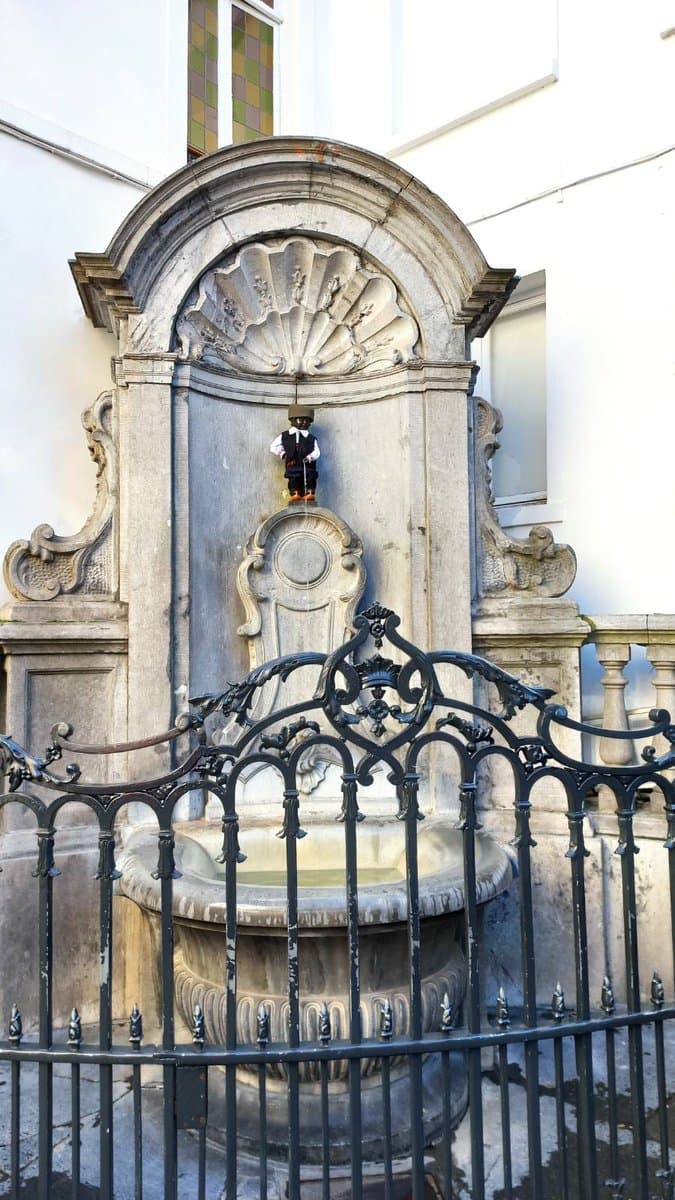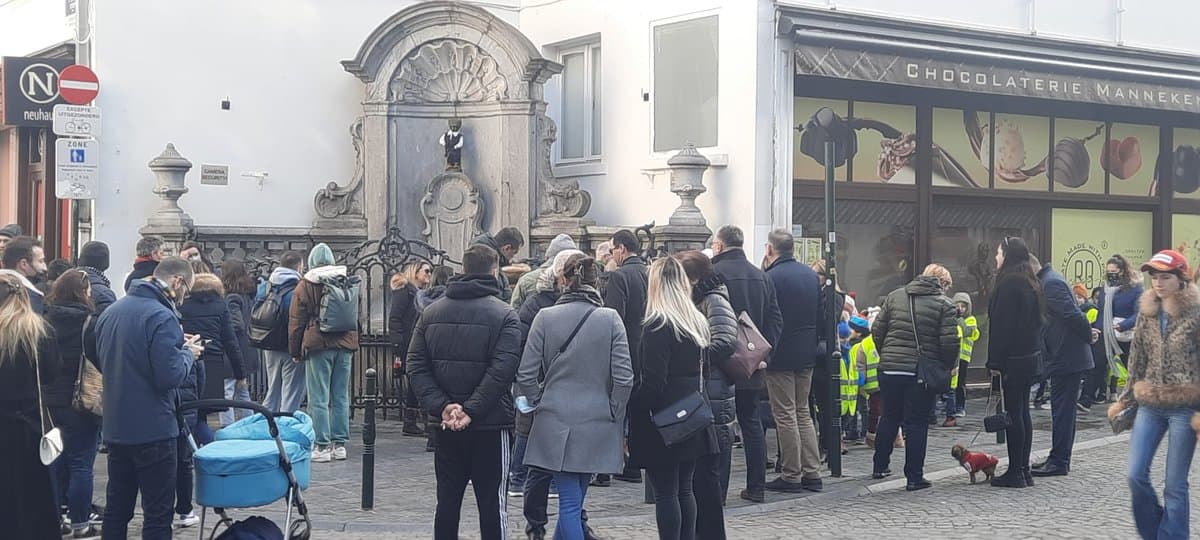Brussels: a symbol of the city in the costume of Šumadija on the occasion the Statehood Day of Serbia
The Embassy of the Republic of Serbia in Belgium has been organising the celebration of the Statehood Day of Serbia every 15 February since 2011 in cooperation with the Brussels authorities and the Belgian association Friends of the Manneken Pis, combining the symbol of Brussels with recognisable elements of Serbian folklore.
The gathering in the centre of Brussels was welcomed by the Ambassadors of Serbia to the EU and NATO, i.e., by Ms Ana Hrustanović and Mr Branislav Filipović respectively. Minister Counsellor in the Embassy of the Republic of Serbia to Belgium Robert Popović spoke about the Serbian tradition and the history of Sretenje.
"Today, Serbia celebrates its national holiday Sretenje, and 15 February is one of the most important days in its history. It is both the day of the Constitution of Serbia and the day of remembrance of the First Serbian Uprising of 1804," Minister Counsellor Popović said. On the occasion of the Statehood Day, he reiterated the words of Serbia’s Foreign Minister Nikola Selaković: “everything we have today would not exist had it not been for Sretenje near Topola in 1804. That moment enabled the existence of our state owing to the heroism of our ancestors and their awareness that freedom was more important than anything else."
The Serbian diplomats also noted that the Constitution of the Principality of Serbia, passed on Sretenje in 1835 and one of the more modern, democratic, and liberal constitutions of its time, partly relied on the Belgian constitutional model of 1831.
The Manneken Pis will be dressed in a Serbian folk costume all day today, and many tourists have already taken pictures of this symbol of Brussels wearing the šajkača and opanke.
The bronze statue of a boy, only 60 centimetres high, was made in the 17th century as a memory of the legend of a boy who extinguished a fuse of the explosive with urine and thus prevented the invaders from blowing up the walls of Brussels.
The statue of the "little boy", which means the Manneken Pis in the Flemish dialect, was made in 1965, whereas the original is kept in the Museum of the City of Brussels.
The Šumadija folk costume that the Manneken Pis wears every 15th February is one of about 1,000 costumes found in the Museum, used according to the occasion.
Source: Tanjug


